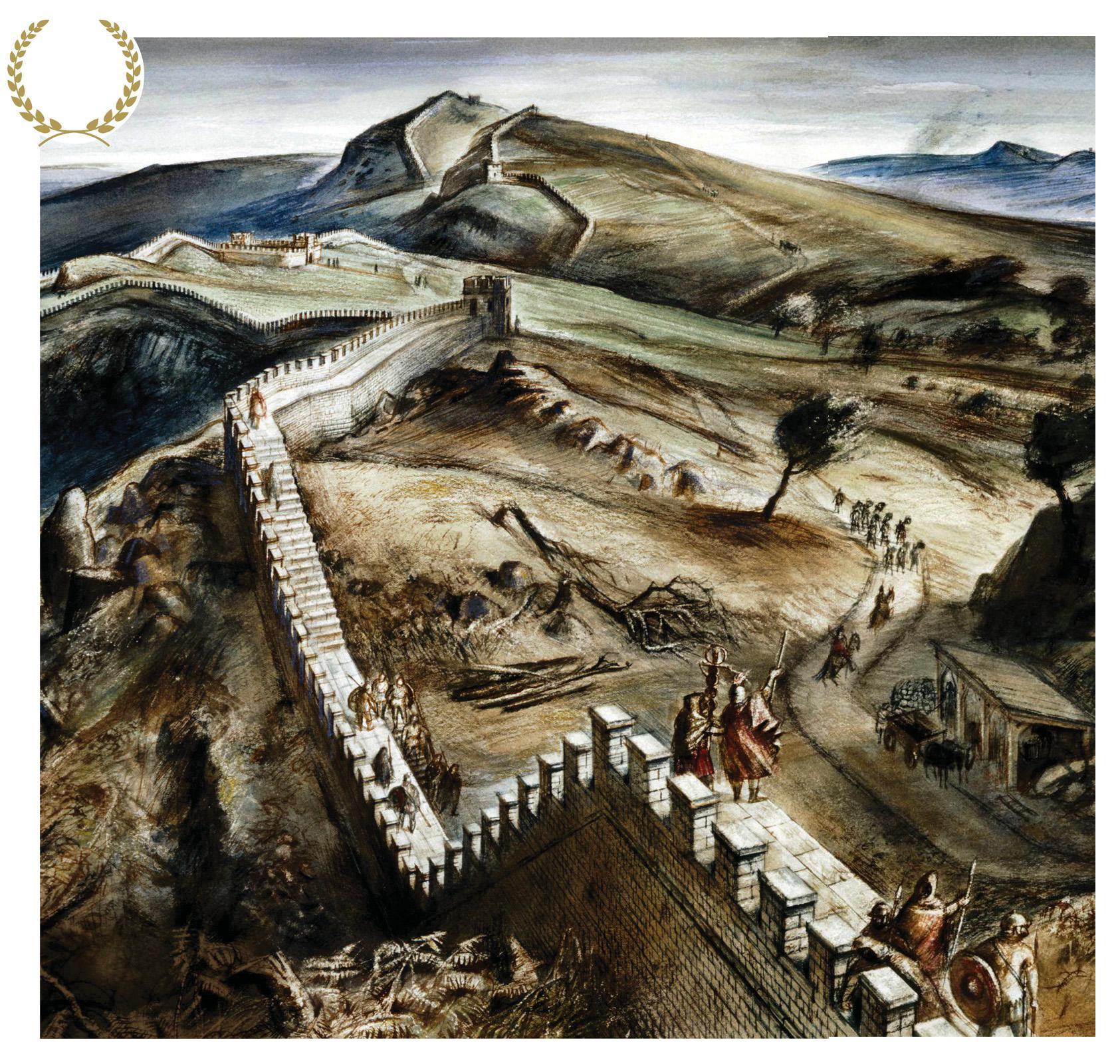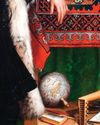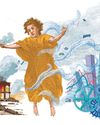FRONTIER TOURISTS

On a June day in 2003, metal detectorists in the north Staffordshire village of Ilam unearthed a curious object. The second-century AD trulla – a small saucepan – is made of a copper alloy, inlaid with colourful, slightly psychedelic enamel whirls. What makes the artefact, now known as the Staffordshire Moorlands Pan (or Ilam Pan), special, though, is the Latin inscription running around its rim: MAIS COGGABATA VXELODVNVM CAMMOGLANNA RIGORE VALI AELI DRACONIS.
What does it mean? Well, the first four words are names of Roman forts in Cumbria: Mais (at Bowness-on-Solway), Coggabata (Drumburgh), Uxelodunum (Stanwix) and Cammoglanna (Castlesteads). The second part of the inscription – RIGORE VALI AELI DRACONIS – can be translated as: “Along the line of Hadrian’s Wall, [this is the cup of] Draco.” If that interpretation is correct, then this is a vessel commissioned by Draco to commemorate his time at these forts – in other words, a souvenir of Hadrian’s Wall. And it’s not the only one – other pans found elsewhere in Britain and France also reference forts on the wall. So how did a Roman military monument come to inspire such keepsakes?
Desirable souvenirs
The construction of Hadrian’s Wall was unprecedented. It was – and in many ways remains – a unique creation. Once completed, the wall was garrisoned for nearly 300 years, during which time tens of thousands of Roman soldiers served along the monument.
Diese Geschichte stammt aus der August 2022-Ausgabe von BBC History UK.
Starten Sie Ihre 7-tägige kostenlose Testversion von Magzter GOLD, um auf Tausende kuratierte Premium-Storys sowie über 9.500 Zeitschriften und Zeitungen zuzugreifen.
Bereits Abonnent ? Anmelden
Diese Geschichte stammt aus der August 2022-Ausgabe von BBC History UK.
Starten Sie Ihre 7-tägige kostenlose Testversion von Magzter GOLD, um auf Tausende kuratierte Premium-Storys sowie über 9.500 Zeitschriften und Zeitungen zuzugreifen.
Bereits Abonnent? Anmelden

Painting on the precipice
Hans Holbein’s masterwork The Ambassadors is an exquisite portrait of two 16th-century diplomats. But it is also crammed with symbols and hidden messages. Tracy Borman deciphers the clues that betray the turbulence of a fateful year
A doctrine of self-control
FERN RIDDELL gives a cautious welcome to an exploration of American attitudes down the years towards both sex work and female sex workers

Samba schools used the carnival to foreground overlooked histories
I WAS RECENTLY IN RIO DE JANEIRO, IN A warehouse on the outskirts of the city, admiring some of the brightly coloured floats that had featured in this year's world-famous carnival. Each spring, just before the start of Lent, hundreds of thousands of people attend the parades in the city's Sambadrome stadium and enjoy watching the floats.

Victorian jelly
ELEANOR BARNETT explores the surprisingly long history of quivering, colourful dessert popular with children
Diplomatic mission
RICHARD TOYE salutes an exploration of the relationship between the ‘Big Three’ Allied leaders

Who says what and why they say it
DAVID RUNCIMAN is impressed by an exploration of how arguments over free speech are often rooted in a desire to close down dialogue

"Africans have been starved of historical figures from their own lands that they can look up to"
PAULA AKPAN speaks to Danny Bird about powerful African woman leaders and the complexities of interrogating historical narratives, colonial biases and these women's own flaws

Harry Price
Harry Price was a British ghost-hunter, psychic researcher and author who achieved fame through his investigations into paranormal phenomena and for exposing fraudulent mediums.

Few works of 20th-century art have such a distinguished list of past owners
A POSTWAR BABY BOOMER AND A LATE SIXTIES student, in my adult life I naturally grew up optimistic. I believed in progress.

The feel of truth
JOSEPH E USCINSKI enjoys an account of a fake report that supposedly exposed a huge conspiracy to wage war in support of the American economy
